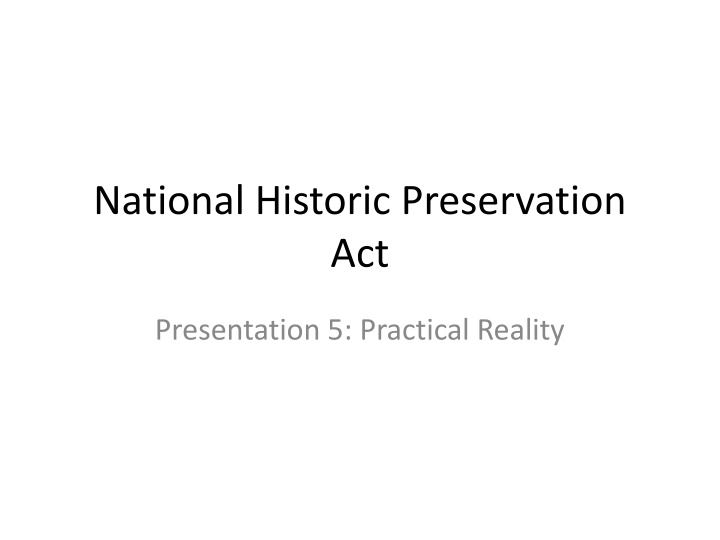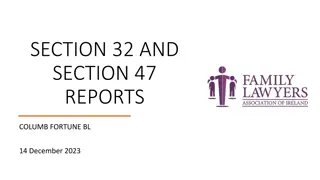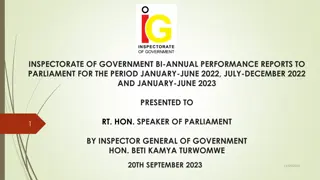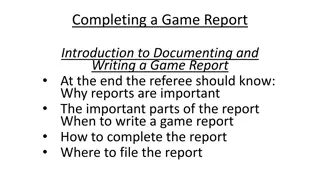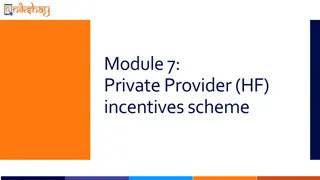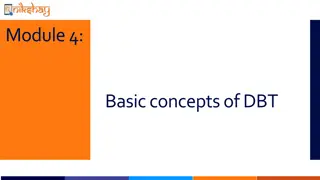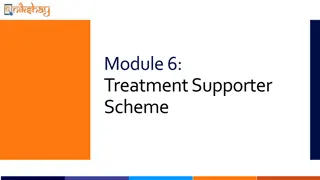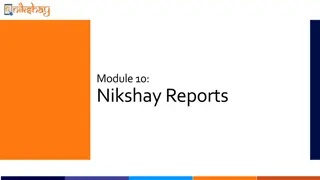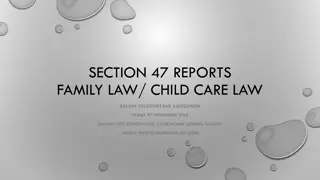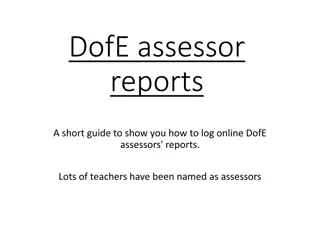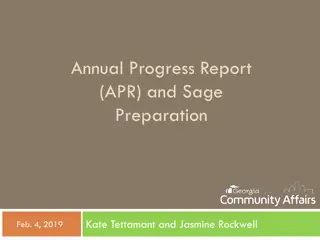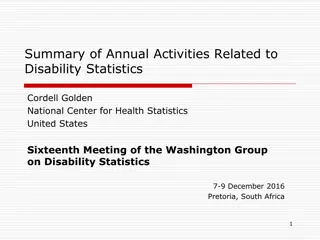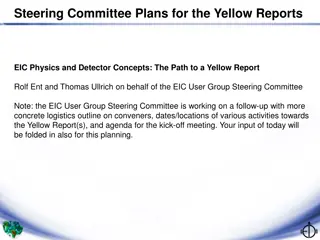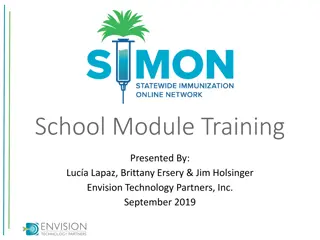Module 10: Overview of Nikshay Reports
Various reports are available in Nikshay for review and actions. Summary reports include patient management, DBT, patient-wise lists, outcome reports, treatment status, HIV status, contact tracing, and more. The Nikshay dashboard tracks actual vs. target data with logic and purpose. Explore the definition of reports and different types of available reports in Nikshay.
Download Presentation

Please find below an Image/Link to download the presentation.
The content on the website is provided AS IS for your information and personal use only. It may not be sold, licensed, or shared on other websites without obtaining consent from the author.If you encounter any issues during the download, it is possible that the publisher has removed the file from their server.
You are allowed to download the files provided on this website for personal or commercial use, subject to the condition that they are used lawfully. All files are the property of their respective owners.
The content on the website is provided AS IS for your information and personal use only. It may not be sold, licensed, or shared on other websites without obtaining consent from the author.
E N D
Presentation Transcript
National Historic Preservation Act Presentation 5: Practical Reality
How does it actually work? Process is dictated by the regulations at 36 CFR Part 800. To satisfy the take account of requirement, they require a process of consultation between the federal agency and the SHIPO, THPO, local governments, applicant, and other interested persons, like the public. Main steps are: Federal agency official determines whether an undertaking exists If it does, the Fed agency official determines the area of potential effect (APE) of the undertaking Then, the Fed agency official determines whether historic properties are present in the APE This usually involves two KEY steps: Identification for archaeology, this means a survey Evaluation of whether the identified properties meet the National Register criteria for archaeology, this means a more detailed investigation to determine whether Then, Fed agency determines whether the historic properties will adversely affected by the undertaking If so, can the undertaking be modified to avoid the adverse effect or is there some mitigating action that can be performed? For archaeological sites, mitigation is usually through recovery of the significant data from the site Throughout this process, as long as there is an undertaking, the Fed agency is required to consult with the SHPO and, or THPO and certain other entities as appropriate This consultative process is at the heart of the Section 106 process Consultation, and compliance, is documented by final production of an MOA Advisory Council gets involved in the cases under certain circumstances, such as to resolve disputes among interested parties. Note that the Fed agency CAN ALWAYS proceed with its project regardless of anyone else s views, as long as they follow the process
Observations on Section 106 It is this Sec. 106 process that generates most of the contract archaeology that public archaeologists do If agency does not comply with NHPA, the ACHP will send them a letter indicating that they have broken the law by foreclosing the Council s opportunity to comment ACHP cannot assess penalties, but the agency can be sued by the public and if they have not complied, they will probably lose Section 106 case law is fairly limited You can read it in a day The 36 CFR 800 recently (10 yrs ago) withstood largely unscathed a massive assault by the National Mining Association and the cell phone industry
Practical Reality of Section 106 Most agencies have their own internal, written policies Agency employees and contractors should know what those policies are (although they can be hard to find) SHPOs and THPOs are political appointees who have predictable problems dealing with public opinion, political pressures, and corporate influences Many agencies comply with Sec. 106 reluctantly; some barely comply at all
What actually happens when there is an undertaking? Fed agency sends letter to SHPO/THPO (and possibly other interested parties) outlining project, defining APE, and explaining plans for complying with Sec. 106 Agency should consult about appropriate archaeological methods, among other issues Agency or its delegate hires contractors to perform survey and evaluation of sites Archaeologists conduct an appropriate survey Potentially significant sites are evaluated for their eligibility for the National Register There are books and articles on how to do this If necessary, data recovery excavations might take place There is a guidance on how to do this published by the ACHP
Identification & Evaluation How do you perform identification ? Legal standard: A reasonable and good faith effort Does this mean you have to find every site? Consult on methods, but what are the conventions? How do you evaluate a site? Use of historic contexts Many states and agencies have developed historic contexts as part of state historic planning process States are supposed to update their plans every 5 years
